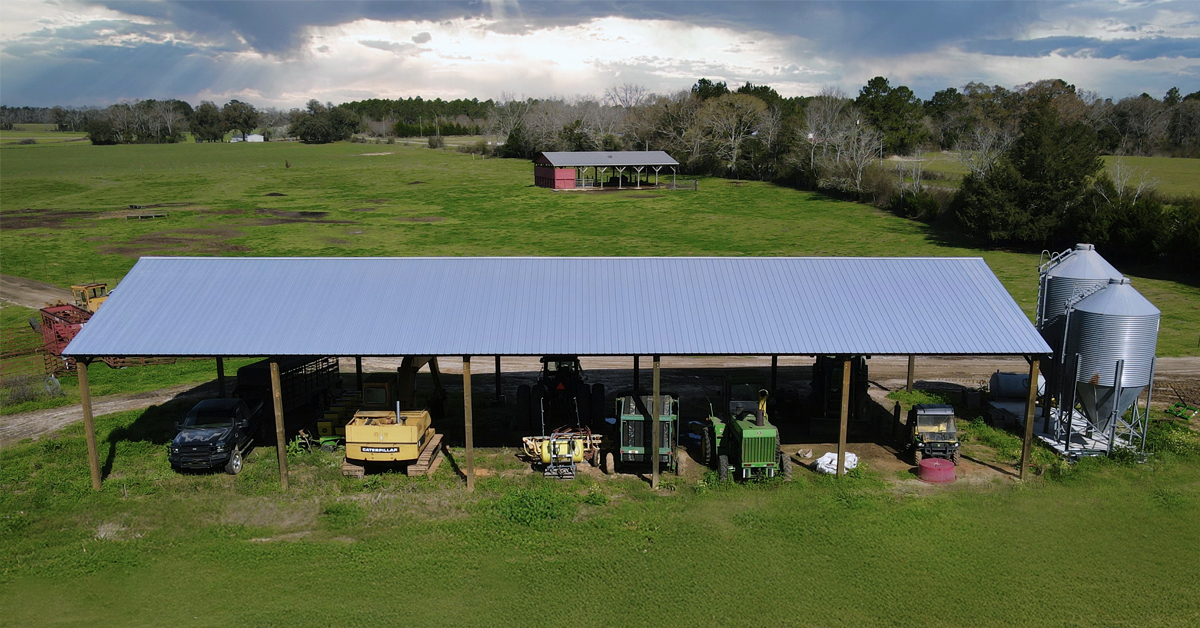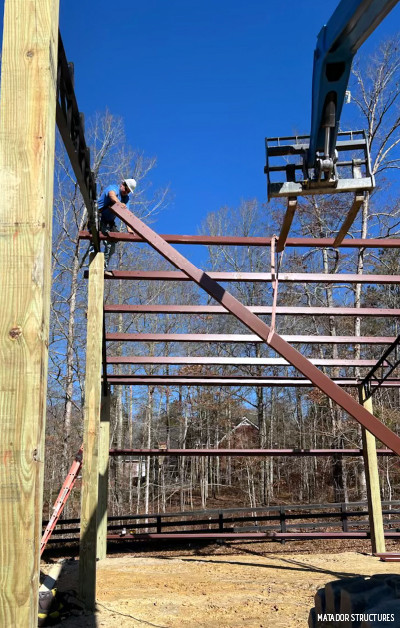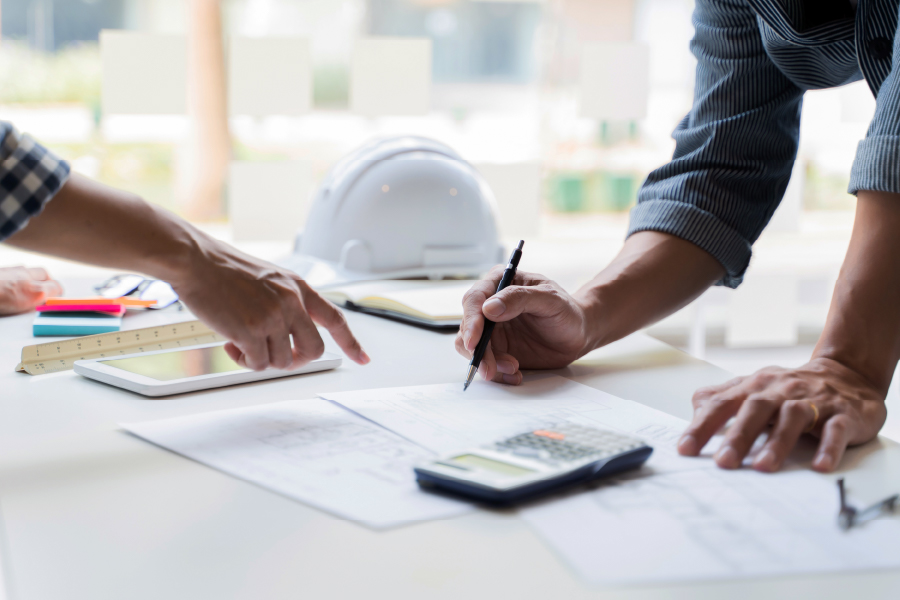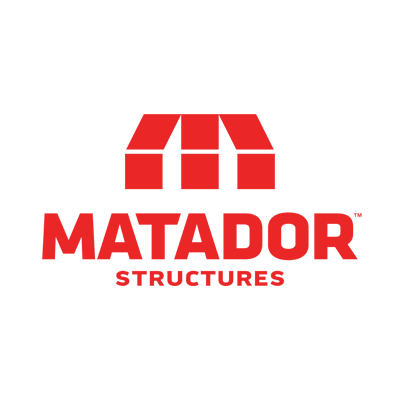Smart Pole Barn Investments: How to Maximize ROI Without Overspending
July 21, 2025

Why Pole Barns Are Smart Investment
Pole barns have moved beyond their humble beginnings. In 2025, they are being recognized as a financially sound building investment for property owners. Whether you are a rural homeowner seeking more outdoor utility space or a business owner optimizing for return, pole barns are delivering unmatched value. Their structural simplicity reduces the cost of materials and labor, and their speed of construction means your money is working faster for you.
The pole barns we sell are open post-frame structures without walls or interior finishes. However, their design allows for easy upgrades so that owners can adapt them over time to fit evolving needs.

Unlike traditional stick-built structures, which require extensive foundations, framing, and inspections, pole barns use a post-frame system that cuts complexity without compromising strength. This method saves money and opens the door to larger square footage and more versatile use cases, with a budget spread out over time. With the option to add walls and customize the space later, you get a structure that grows with you, without locking you into a single design or use. That equates to long-term savings that extend far beyond the build itself.
Pole barns are not just about utility; they also build equity. A professionally built pole barn adds tangible property value. Whether you are listing your home soon or building for a family legacy, structures like this are seen as capital improvements. That means they can be depreciated for tax purposes if used for a business, or become a key selling point for prospective buyers seeking open storage, workspace, or an additional garage.
They’re open by design, yet full of potential. Flexible, finance-friendly, and future-focused, these structures give property owners a smart starting point and room to grow. That’s why more strategic buyers are choosing post-frame construction over traditional buildings to maximize value without overbuilding.
The 3 Most Overlooked Factors That Drive Long-Term Value
It is easy to focus on the upfront price when building a pole barn, but long-term value is won in the details. Three factors, often overlooked by first-time builders, significantly impact the lifespan and return on investment of your pole barn.
The first is material quality. Wood quality varies widely. Pressure-treated posts and galvanized steel roof panels can extend the lifespan of your building. That is not just durability; it is compounded savings. Cheap materials lead to premature repairs, higher insurance premiums, and headaches that erode your return on investment.
The second is the construction technique. Post depth, spacing, and roof pitch all matter. Posts should be set below the frost line and spaced appropriately to ensure structural integrity. A steeper roof pitch encourages snow and rain runoff, which protects your building from water damage and load stress.
The third factor is maintenance and climate alignment. A pole barn in a wet or coastal climate needs more aggressive moisture protection than one in a dry environment. Annual inspections and periodic maintenance can stretch a pole barn's life by decades.
Budget Breakdown: What You Will Actually Spend and Where to Save
Budget-conscious does not mean cutting corners. It means spending wisely and knowing where every dollar goes. The average cost to build a pole barn in 2025 ranges from $8-10 per square foot for a kit, or $12-15 per square foot installed. Of course, these prices are averages and don’t include delivery, engineering or sales tax.
Size is the biggest driver. Every extra square foot adds cost, so choose your layout with intention. Material quality is another critical choice. Spend more now on treated wood and corrosion-resistant fasteners and save thousands later in avoided repairs. Or, better yet, go with a kit like those from Matador to ensure you have the best quality pole barn.
Rent, Resell, or Reuse: 3 Ways Pole Barns Pay You Back
A pole barn is not just an expense; it is a tool that can generate income and expand your financial flexibility. The most obvious strategy is renting it out. If you are not using the pole barn year-round, you can lease it to those who need outdoor equipment or RV storage, or as covered outdoor workshop for local tradespeople.
Resale is the next payoff. A property with a pole barn instantly becomes more attractive to potential buyers. It increases usable space, provides weather-safe storage, and helps homes stand out in competitive markets. Many buyers view post frame structures and outbuildings as must-haves. That gives you leverage and often a higher sale price.
And then there is reuse. One of the strongest features of a pole barn is adaptability. With a little planning, your workshop today could be your guest suite tomorrow, with the addition of walls, insulation, windows and doors. That kind of flexibility ensures your building stays useful long after your initial needs have changed.
Mistakes That Cost You Thousands and How to Avoid Them
Success is not just about what you do; it is about what you avoid. These are the most common money-losing mistakes first-time pole barn investors make and how you can steer clear of them.
First, don’t cut costs with cheap materials. Untreated posts or bargain fasteners might look good on your estimate, but they fail faster and void warranties. Second, skimping on construction is a silent killer. Posts that are too shallow, spacing that is too wide, or roofs that are too flat can lead to premature failure or structural issues.
Financing Your Build: Smarter Ways to Pay Without Overcommitting
 There is more than one way to afford a pole barn, especially if you plan ahead. Some buyers finance their build through agricultural or construction loans, while others use home equity or staged building to spread out costs. For smaller builds, personal loans may work, but for most, the best value comes from matching financing to the barn’s purpose, like personal use, business, or farm-related.
There is more than one way to afford a pole barn, especially if you plan ahead. Some buyers finance their build through agricultural or construction loans, while others use home equity or staged building to spread out costs. For smaller builds, personal loans may work, but for most, the best value comes from matching financing to the barn’s purpose, like personal use, business, or farm-related.
If your barn will be used for agricultural or business purposes, consider a commercial loan. Many banks offer special financing with better rates and tax advantages for these types of projects. In some cases, even USDA or SBA loans may apply. Pole barn kits may offer a route that requires less upfront capital.
You can start it as a pole barn and then later, when your needs evolve, you can pay for the next stage as you build, when you add walls, doors, windows, insulation or interior finishes over time. This spreads out the cost, giving you financial breathing room.
What Real Owners Say About Their Investment
Nothing builds trust like real results. Talk to long-time pole barn owners, and the stories are strikingly consistent. Low maintenance, long lifespan, and flexibility that outlives changing needs. Many owners tell us that the purpose of their pole barn evolves over time. It might start as storage, then adapt to become garages, workshops, and even guest housing.
What owners regret most is not building sooner or not building bigger. If your budget allows, plan with the future in mind. Because as your needs grow, a flexible and well-built pole barn will continue to pay you back for decades.
Ready to Start? Your ROI Optimized Planning Toolkit
Every wise pole barn investment starts with a plan. Begin by defining your use cases. Not just today but three, five, and ten years down the road. Think about what you want this structure to do for you and how those needs might evolve.
From there, choose materials that match your climate and your goals. Pressure-treated posts and galvanized steel may cost more up front, but they dramatically improve durability and efficiency. If you are not experienced with construction, hire a qualified builder who understands post-frame systems. If you are going DIY, follow the manufacturer’s instructions and best practices for post depth, spacing, and roof slope.
Map out your maintenance schedule now. Annual inspections of the posts and roof after each season are simple habits that add decades to your investment.
And lastly, build with flexibility. Your pole barn, a post frame open space, could evolve over time. If you might later want to convert your pole barn, choose a site that not only works for today’s use, but allows room for future upgrades. Will you want to enclose the space or add utilities down the road? You could even rough in openings that might later become doors or windows. These little moves make your building more adaptable and more valuable in the long run.
Let’s Get Started
At Matador, we help property owners start strong with high-quality pole barn kits designed for lasting value. Whether you're expanding your property or planning a future upgrade, we’re here to guide you every step of the way.
👉 Contact us today to get a custom quote or explore kit options that fit your vision and your budget.











